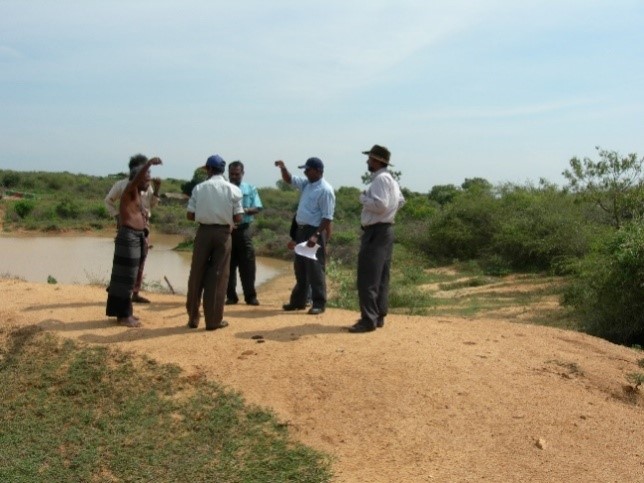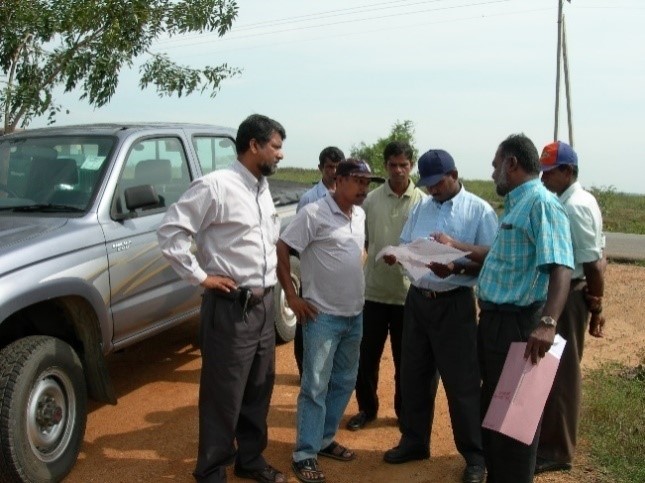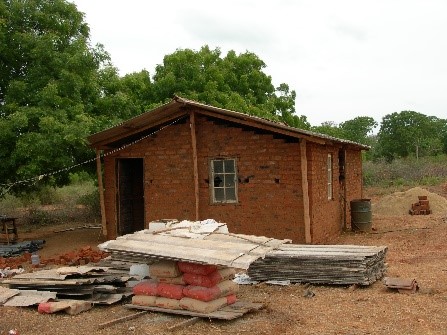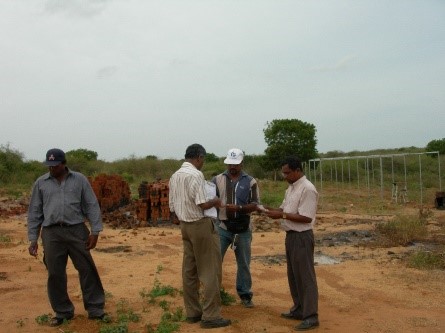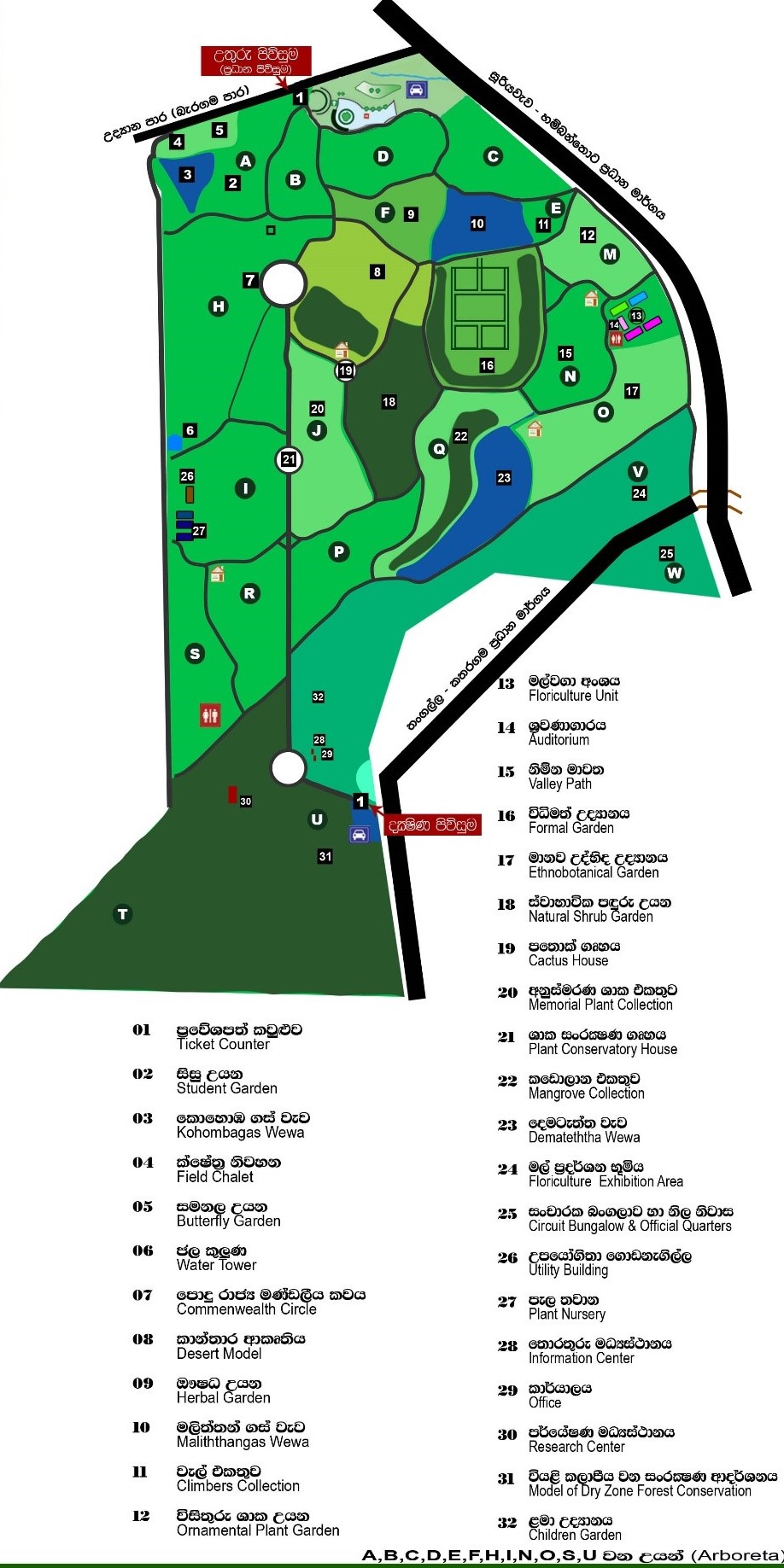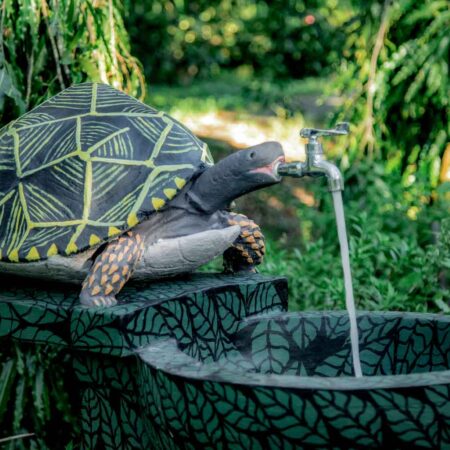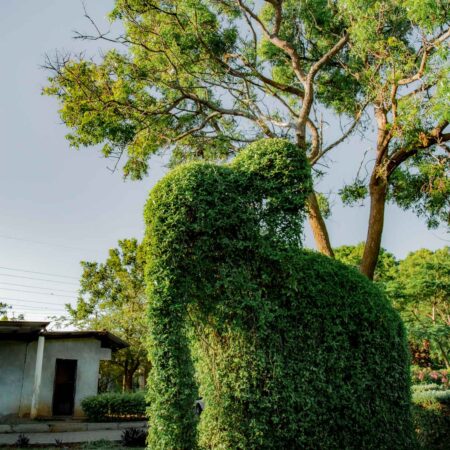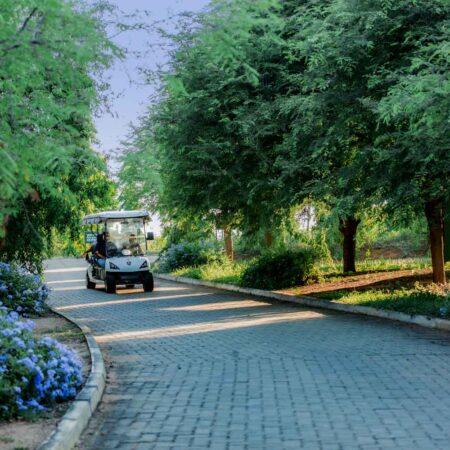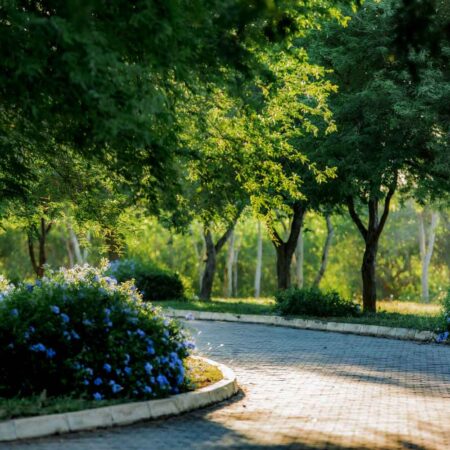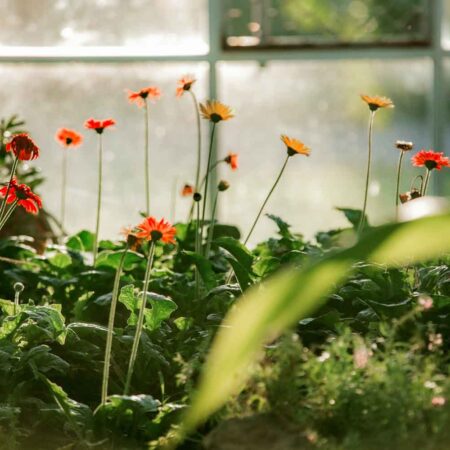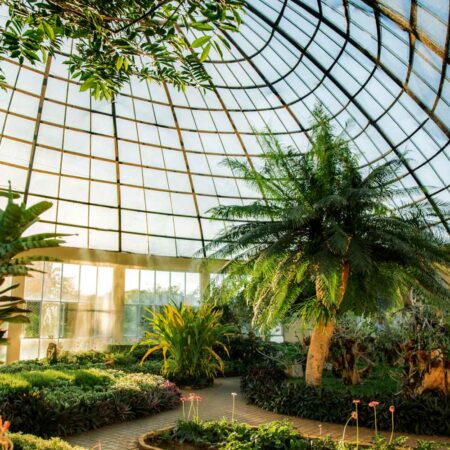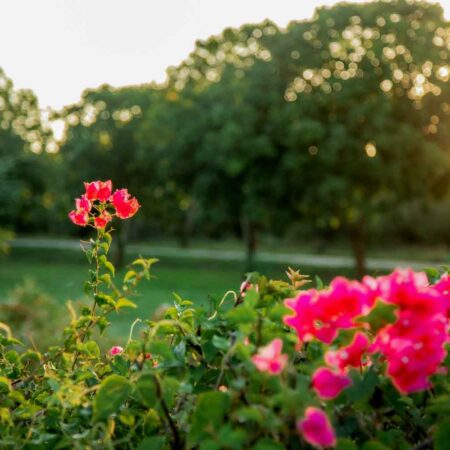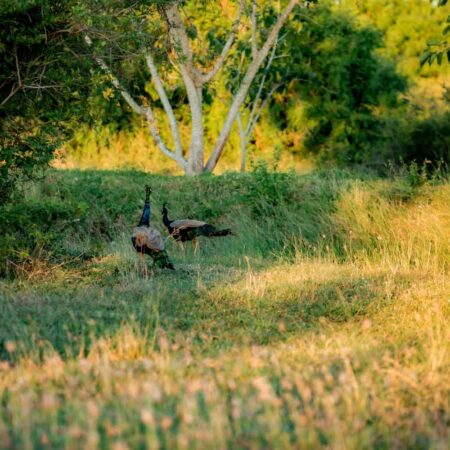
மிரிஜ்ஜவில உலர் வலய தாவரவியல் பூங்கா
19 ஆம் நூற்றாண்டில் ஆங்கிலேயர்களால் தாவரவியல் பூங்காக்கள் நிர்மாணிக்கப்பட்ட பின்னர் 130 வருடங்களுக்குப் பிறகு இலங்கையின் தாவரவியல் விஞ்ஞானிகளால் நிர்மாணிக்கப்பட்ட முதலாவது தாவரவியல் பூங்கா இதுவாகும்
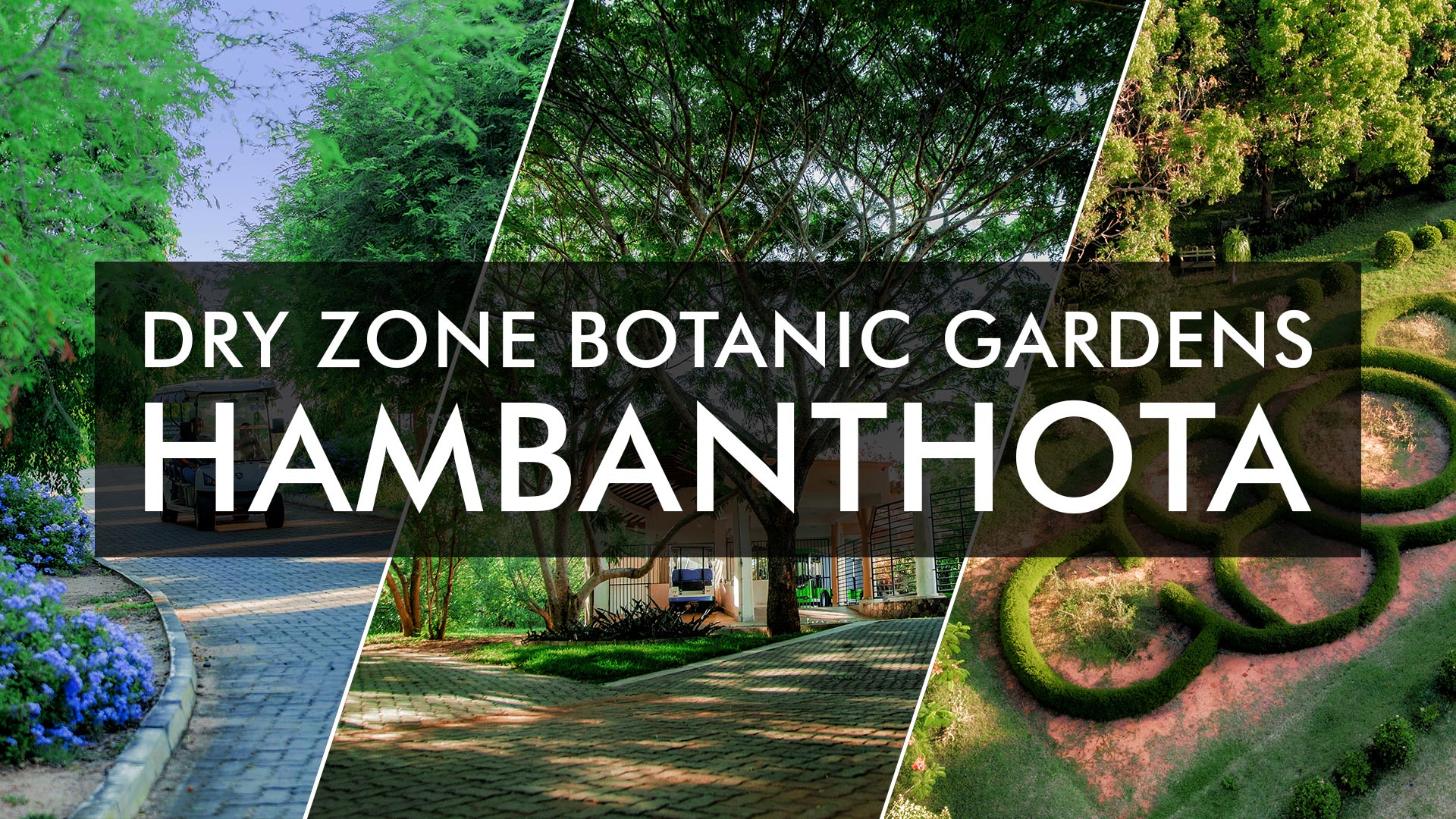
பூங்காவின் அமைவிடம்
அம்பாந்தோட்டை மாவட்டத்தில் அமைந்துள்ள உலர் வலய தாவரவியல் பூங்காவனது இரண்டு நுழைவாயில்களைக் கொண்டுள்ளது. கொழும்பு - கதிர்காமம் புதிய அதிவேகப்பாதை மற்றும் சூரியவேவ - ஹம்பாந்தோட்டை பிரதான பாதை பெரகம பாதைளை எதிர்கொள்ளும் இத் தாவரவியல் பூங்காவின் கட்டுமானப் பணிகள் 2006 ஜூலை 20 ஆம் தேதி தொடங்கப்பட்டுஇ 2013 நவம்பர் 14 ஆம் தேதி கொழும்பில் நடைபெற்ற பொதுநலவாய அரசுத் தலைவர்கள் மாநாட்டின் ஓர் அங்கமாக பொதுமக்களுக்காகத் திறந்து வைக்கப்பட்டது
இலங்கையிy; நடைபெற்ற பொது நலவாய நாடுகளின் தலைவர்கள் மாநாட்டின் ஆரம்ப விழாவில் கலந்துகொள்ள வருகை தந்த 52 நாடுகளின் தலைவர்கள் மற்றும் பிரதிநிதிகள் தமது விஜயத்தை நினைவு கூருமுகமாக இப்பூங்காவின் பெரிய சுற்று வட்டமொன்றில் ஞாபகார்த்த மரங்களை நட்டனர். அதுவே பொது நலவாய சுற்று வட்டம் என அழைக்கப்படுகிறது.
- உலர் மற்றும் அதி உலர் வலய தாவரங்களை வெளிவாரிப் பேணுகை முறையில் பேணிப் பாதுகாத்தல்.
- உலர் வலயத்தின் பல்வேறு சுற்றாடல் தொகுதிகள் மற்றும் அவற்றின் தாவர வகைகள் பற்றிய கற்கைகளை மேற்கொள்ளல்
- உலர் வலயத்தின் குறை பயன்பாட்டுத் தாவர வகைகளை அடையாளம் காணலும் தாவர வகைகளைப் பொது மக்களுக்கு மத்தியில் பிரபல்யப்படுத்தலும்.
- உலர் வலய த்திற்கு பொருத்தமான தாவர வகைகளை கண்டறிதலும் அவற்றை உலர் வலயத்தினுள் ஊக்குவித்தலும்
- உலர் வலயத்தினுள் வர்த்தக ரீதியான பூ வளர்ப்புக்குப் பொருத்தமான தொழில்நுட்ப முறைகள் மற்றும் பூ வளர்ப்பை ஊக்குவித்தல்
- உள்ளூர் மற்றும் வெளிநாட்டு சுற்றுச்சூழல் சுற்றுலாவை ஊக்குவிப்பதன் மூலம் தேசிய பொருளாதாரத்திற்கு பங்களித்தல்
உலர் வலய தாவரவியல் பூங்காவின் வரலாறு
1883 மற்றும் 1906 க்கு இடையில் பிரிட்டிஷ் காலனித்துவ காலத்தில் அனுராதபுரம் மாவட்டத்தில் ஒரு தாவரவியல் பூங்காவை உருவாக்கும் முயற்சி தோல்வியடைந்த பின்னர், இலங்கையின் உலர் வலயத்தில் நிறுவப்பட்ட முதல் தாவரவியல் பூங்கா மிரிஜ்ஜவில உலர் வலய தாவரவியல் பூங்கா ஆகும். தேசிய தாவரவியல் பூங்காக்கள் திணைக்களத்தின் முன்னாள் பணிப்பாளர் நாயகம் பேராசிரியர் சிரில் விஜேசுந்தர மற்றும் அவரது குழுவினர் இரண்டு காரணங்களை மையமாகக் கொண்டு இத் தாவரவியல் பூங்காவை நிறுவ 300 ஏக்கர் பரப்பளவு கொண்ட இந்த இடத்தைத் தேர்ந்தெடுத்தனர். முதலாவது காரணம்இ நிலம் குறைவாகப் பயன்படுத்தப்பட்டுஇ ஆக்கிரமிப்பு தாவர இனங்களால் பெரிதும் ஆக்கிரமிக்கப்பட்ட முள் புதர் காடுகளால் மூடப்பட்டிருந்தது. மற்றொரு காரணம்இ நி அருகில்இ 'பெரகமாவில' என்று அழைக்கப்படும் வற்றாத நீர் ஆதாரம் இருந்ததும் ஆகும்
உலர் வலய தாவரவியல் பூங்காவிற்கான நிலத்தைத் தேர்ந்தெடுப்பதற்காக மேற்கொள்ளப்பட்ட முதல் விஜயம்
இதற்காக தேர்ந்தெடுக்கப்பட்ட காணி இலங்கை மகாவலி அதிகாரசபை மற்றும் அம்பாந்தோட்டை மாவட்ட செயலகம் என்பவற்றின் மூலம் 2006 ஆம் ஆண்டு அமைச்சரவை ஒப்புதலின் பிரகாரம் தேசிய தாவரவியல் பூங்கா திணைக்கத்திடம்ஒப்படைக்கப்பட்டது. இலங்கையில் இறப்பர் பயிர்செய்கையினை அறிமுகப்படுத்தும் நோக்கில் 1876 ஆம் ஆண்டு ஹெனரத்கொட தாவரவியல் பூங்கா பூங்கா நிறுவப்பட்டு 130 ஆண்டுகளுக்குப் பிறகு> 2006 ஜூலை மாதம் 20 ஆம் திகதி பேராசிரியர் சிரில் விஜேசுந்தர மற்றும் அவரது அர்ப்பணிப்புள்ள ஊழியர்களால் இப் பூங்காவின் வடிவமைப்பு பணிகள் தொடங்கப்பட்டது. உள்நாட்டு நிபுணர்களால் பூங்காவினுள் காணப்படும் குளங்கள், பல்வேறு வகைகளையும் சார்ந்த விசாலமான மரங்களின் சாலைகள் மற்றும் பல்வேறு வகை அலங்காரத் தாவர இல்லங்கள் மூலம் பூங்காவின் ஆச்சரியம் மிகு அழகு மெருகூட்டப்படுகிறது. உலகின் பிரபலமான, ஒழுங்கு முறைப்படியான பூங்காக்களில் ஒன்றான பிரான்ஸ் நாட்டின் வேர்சைல்ஸ் பூங்காவின் நிர்மாண அமைப்புக்கு ஒப்ப அமைக்கப்பட்டுள்ள மிக விசாலமான பூங்காவாக இது காணப்படுகிறது. இதன் கவர்ச்சிமிகு அலங்கார நில அமைப்பு ஒரு பொக்கிஷமாகப் போற்றத்தக்கதாகும். பிரதான நுழைவாயில் மற்றும் கழிப்பறைகளுடன் கூடிய வசந்த வீடுகள் அரச பொறியியல் கூட்டுத்தாபணத்pனால் (ளுநுஊ) வடிவமைக்கப்பட்டு கட்டப்பட்டனஇ மேலும் சரளைக் கற்களால் ஆன உள்ளகப் பாதைகளளின் வலையமைப்பு தென் மாகாண வீதி அபிவிருத்தி அதிகார சபையினால் நிறுவப்பட்டது. ஆரம்ப நிலத்தோற்றம் மற்றும் நடவு திட்டங்கள் தேசிய தாவரவியல் பூங்காக்கள் திணைக்களத்தினால்மேற்கொள்ளப்பட்டனஇ பணியாளர்கள் மற்றும் ஒப்பந்த அடிப்படையில் ஆட்சேர்ப்பு செய்யப்பட்ட நபர்களை அங்கு பணியமர்த்தப்பட்டனர்.
படம் 3: தாவரவியல் பூங்காவை உருவாக்குவதற்கான ஆரம்ப தள அபிவிருத்தி பணிகளின்போது
கைவிடப்பட்ட பகுதியின் பல பகுதிகள் ஆக்கிரமிப்பு அல்லி இனங்களான ஓபன்டியாடில்லீனிஇ லண்டானா கேமரா மற்றும் ப்ரோசோபிஸ் ஜூலிஃப்ளோராவால் பெருமளவில் காணப்பட்டதுடன். அசாடிராக்டா இண்டிகாஇ சபிண்டுஸ் மார்ஜினேட்டஸ் மற்றும் லிமோனியா அசிடிசிமா போன்ற மரங்குளம் இருந்தன. மேலும் அரிதான இனங்களானஇ டிக்ரோஸ்டாக்கிஸ் சினேரியாஇ ஃப்ளூஜியா லுகோபைரஸ்இ ஜிசிபு சோனோபோலியா மற்றும் அசிமேட்ரா காந்தா போன்ற புதர் இனங்கள் காணப்பட்டன. சிசஸ் குவாட்ராங்குலாரிஸ்இ நீர்வீழ்ச்சிகள்இ பறவைகள்இ ஊர்வன மற்றும் பாலூட்டிகள் உள்ளிட்ட சில வகையான விலங்கினங்களும் இங்கு வசித்து வந்தன.
மிரிஜ்ஜாவில உலர் வலய தாவரவியல் பூங்காவின் தற்போதைய நிலை
ஒவ்வொரு மரச்சாலையின் இருபுறமும் ஒரு தாவர இனம் நடப்பட்ட 26 மரச்சாலைகள் உள்ளனஇ மேலும் இலங்கையில் அதிக எண்ணிக்கையிலான மரச்சாiலைகளைக் கொண்ட ஒரே தாவரவியல் பூங்கா இது ஆகும். பார்வையாளர்கள் மற்றும் மாணவர்களpன் வசதிக்காக தாவரங்களின் உயிரியல் வடிவம்இ உள்ளூர் பரம்பல் தோற்றம் மற்றும் விஞ்ஞானப் பெயர்இ பொதுவான பெயர்கள் மற்றும் அவற்றின் குடும்பம் போன்ற தகவல்களை உள்ளடக்கிய விபரப் பலகைகள சிங்களம்இ தமிழ் மற்றும் ஆங்கில மொழிகளில் காடசிப்படுத்தப்பட்டுள்ளன
அமைவிட வரைபடம்
பூங்காவை பார்வையிடுவது எப்படி
மிக முக்கியமான இடங்களைக் காட்டும் வரைபடம் இங்கு இணைக்கப்பட்டுள்ளது
MDBG இன் வரைபடமானது தலைகீழாக பார்க்கும் போது மயிலின் வடிவத்தைக் காட்டுகிறது.மயில்கள் இப்பகுதியில் பொதுவான காணப்படும் பறவைகள் ஆகும். பூங்காவை பொது மக்களுக்காக திறந்ததன் பிறகுஇ பார்வையாளர் வசதிகள் மற்றும் வெளிப்புறப் பாதுகாப்புக்கான பல அபிவிருத்திப் பணிகள் செயல்படுத்தப்பட்டுள்ளன. வடக்கு நுழைவாயிலிலிருந்து தெற்கு நுழைவாயில் வரை பிரதான பாதையினல் மூன்று சுற்று வட்டங்கள் உள்ளன. படம் 10 இல் காணப்படுவது போல் முதல் வட்டம் பெரிய வட்டம். இது ஒரு புல்வெளிஇ அதைச் சுற்றி கன்னா மலர் படுக்கைகள் அமைந்துள்ளன. பெரிய சுற்று வட்டத்தைச் சுற்றி பொதுநலவாய சுற்றுவட்டம் அமைந்துள்ளதுஇ இது ஹம்பாந்தோட்டையில் அமைந்துள்ள மஹிந்த ராஜபக்ஷ சர்வதேச மாநாட்டு மண்டபத்தில் நடைபெற்ற 23வது பொதுநலவாய அரச தலைவர்கள் மாநாட்டிற்குன்(ஊர்ழுபுஆ) தொடக்க விழாவில் பங்கேற்ற அரசாங்கங்களின் தலைவர்களால் நடப்பட்ட 52 மரங்களைக் கொண்டுள்ளது.
4.5 VISITORS RATING
Trusted By 1000+ Visitors
கவர்சியான இடங்கள்
நீங்கள் பார்வையிடுவதற்கு
பூங்காவில் உள்ள அழகான இடங்களை பார்பதற்கு சுற்றி நடந்து செல்லவது புது அனுபவமாக அமையும்
7.30 AM - 6.00 PM
Opening Hours
7.30 AM - 5.00 PM
Ticketing Hours
365 Days
Open
For Overseas Tourist
Entrance Fee
Come and explore the spectacular plant life of Sri Lanka
- மழை மர (Samanea saman) மரச்சாலை
- When entering through the Northern main entrance of MDBG the main avenue is adorned with Rain tree (Samanea saman) commonly termed “Pare Mara” in Sinhala and two mixed arboreta were established on both sides of the avenue including native tree species of the dry zone. At the end of this avenue, on the left side of the four-way junction a Golden shower tree (Cassia fistula) avenue has been established, while on the right side a Spanish cherry (Mimusops elengi) avenue as well as ahead a Palmyra (Borassus flabellifer) avenue are located. At the four way junction in between the Rain tree and Golden shower tree avenues, a Herbal garden can be seen which contains more than 500 medicinal plants belonging to about 200 species. About 1ha has been allocated for ex-situ conservation of dry zone flora in an arrangement according to the orders depicted by Angiosperm Phylogenetic Group III (APG III) system and is the Student garden.
- பனை மரம் மரச்சாலை
- Plant collections of Ebony, Fig and Wines have been established in arboreta and an Ornamental plant collection has been established in the field. Foliage plant and Cactus collections have been established inside protected structures. A formal garden was designed adjacent to Maliththangaswewa tank, according to the formal landscape seen at the renowned Versailles Palace garden of France. As per plan main features of the gardens of two circles connected by the main drive were placed on a straight line.
- Great circle and around this Commonwealth circle can be seen
- The second circle is the Plant conservatory in which an internal environment of low temperature and high humidity is maintained with shade nets, humidifiers and opened windows. This Plant conservatory conserves plants and maintains flowering and ornamental plants which cannot grow under prevailing outside climatic conditions. The third circle consists of a Topiary garden which was created mainly using Leucophyllum frutescens, Durantha erecta, Barleria cristata, Conocarpus lancifolius and Ficus benjamina. It consisted of hedges and pruned plants to show different shapes.
- Inside plants of Plant Conservatory
- Cactus house consists of different species of cactus mainly foreign species from Middle East countries. There are Native species such as Euphorbia antiquorum and more exotic species can also be seen.
- Inside of Cactus house
- Each and every road in the botanic gardens is planned to be shady to provide a comfortable environment for walks by visitors. There are 26 avenues with 24 endemic, native and foreign plant species have been established as at present. A Polyalthia avenue has been established along the west boarder of the botanic gardens by alternatively planting Polyalthia plants by the sides of the avenue to make a live wind barrier. Due to its closeness to the Indian Ocean and location in the lowland dry zone of Sri Lanka, wind velocity is high across the botanic gardens and hence this wind barrier mitigates wind damage of plants.
- Polyalthiaavenue
- The Climbers collection consists of various types of climber species especially native to the dry zone of Sri Lanka. Ornamental plant collection includes native and exotic species of flower and foliage plants. All plants in the Ornamental plant collection are arranged in various shapes of beds. Memorial plant collection was established in 2016 to plant trees at special occasions by special visitors. The Orchard has been established to especially plant underutilized native plants of the dry zone. The Southern entrance of MDBG was established in 2017 to facilitate visitors to enter through the Tangalle – Kataragama new road. Parallel to the new office building, an information center and other infrastructure facilities have also been established
- Waterfall and one of two ponds at Southern entrance of MDBG
- A large number of plants which are native to the dry zone of Sri Lanka can be found in MDZBG. These plants are being conserved in 16 sections of mixed arboreta, two systemic arboreta, Medicinal plant garden and Natural shrub lands. There are more than 6500 trees grown in arboreta belong to more than 200 species excluding avenue trees. Plants are grown according to plant families in the systemic arboreta. More than 500 medicinal plants that belong to over 200 species are being conserved in medicinal plant garden. According to a study conducted a few years ago about 45 butterfly species could be seen at the botanic gardens, including an endemic butterfly species Troides darsius which belongs to the genus Papilionidae. According to the national red list in 2012 three of these butterfly species are endangered. 107 bird species have been observed at Maliththangaswewa. Among these species one is endemic and three are endangered. According to a study conducted by Department of wildlife in 2021 about 150 – 200 deer live inside two natural shrub lands inside the botanic gardens. While deer, monkeys, porcupines, rats and peacocks cause damage to plants, wild boar and iguanas damage lawns and beds. Sometimes these damages caused by deer and wild boar can be severe. Natural shrub land of about 4 ha in the middle of the botanic gardens has been preserved to conserve existing flora in the land before creation of the botanic gardens and to show visitors vegetation that previously existed. The other natural shrub land located around the Dry Zone Research Center which is about 14 ha and separated triangular section which is about 6 ha have been preserved to conduct research on dry zone flora and create a dry zone forest model. Initiation of work of the botanic garden was under the leadership of Mr. Sumith Ekanayakewho was the first Officer in Charge (2006 – 2017). Mr. M.G.S. Kumara was the second Officer in Charge (2017 – 2020) and Assistant Director Mr. P.S.K. Palihakkara took over the duties as the Officer in Charge in 2020
- Plant collection of Mirijjawila Dry Zone Botanic Gardens
- MDBG is located in the low land dry zone of Sri Lanka and mean annual rainfall expectancy is less than 500 mm according to the “Agro – ecological regions in Sri Lanka” published by Department of Agriculture in Sri Lanka. Soil is Reddish brown with high amount of gravel in sub soil and terrain is flat. Mid January to March and July to mid of September are major dry periods and July to mid of September is a severe dry period at the botanic gardens. During dry spells lawns of the botanic gardens including lawn in arboreta turn brownish in color. To minimize browning of grasses and prevent drying, adequate watering has to be done. Due to very low rainfall in July and August of 2021, planting was not done in the arboreta however planting was done in all other months according to the annual technical action plan to enrich plant and species diversity. More than 8000 trees are grown in MDBG including over 6500 trees in arboreta and 1500 trees in avenues. Plants are arranged according to plant families in systemic arboreta while plants are mixed in the mixed arboreta. While more than 5500 plants belonging to over 100 species have been grown in the mixed arboreta, more than 1000 plants belong to over 100 species have been grown in the systemic arboreta. Among the 16 sections of the arboreta only nine have been completed and inventoried. They are A, B, C, C1, D, H, I, O and F (i.e. the Medicinal plant garden) while E is the Climber collection. However both F and E also contain a considerable number of trees. Section S is the Orchard collection; R consists of the Ebony collection while section J consists of the Fig collection. Sections S, R and J of the arboreta are to be further developed. The Memorial plant collection is located in section P and section N consisted of the Valley avenue and other landscaping features. Several endangered medicinal species are conserved at the gardens such as Buchanania axillaris (Anacardiaceae) termed “Kiripalu”in Sinhala, Basella alba (Basellaceae) called “Rathunivithi” in Sinhala, Capparis moonii (Capparaceae) termed “Sudu wellangiriya” in Sinhala, Salacia reticulate (Celastraceae) termed “Kothala himbatu” in Sinhala, and Diospyrosebenum (Ebenaceae) called “Kaluwara”in Sinhala Several endemic medicinal plant species are also conserved at the Medicinal plant garden such as Schefflera heterobotrya (Arecaceae) called “Iththa” in Sinhala, Vernonia zeylanica (Asteraceae) termed “Pupulawel” in Sinhala, Cassinebalae (Celastraceae) called “Neralu” in Sinhala, and Argyreia populifolia (Convolulaceae termed “Girithilla” in Sinhala. Diospyros ebenoides (Ebenaceae) termed “Kalukaratiya” in Sinhala is an Endangered Endemic species that can be seen in several arboreta at the MDBG. It can also be found in Dry mixed evergreen forests around MDBG such as in Yala and Lunugamwehera National Parks. Several endemic, native as well as foreign plant species can be found in arboreta and medicinal plant collections. Furthermore 26 avenues consisting of of 24 endemic, native and exotic plant species have been established. These species are shown below. 1. SamaneaSaman – Rain tree 2. Bauhinia racemosa – Bidi leaf tree 3. Cassinebalae–Neralu 4. Monooncoffeoides- Omara 5. Cassia fistula – Indian laburnum, Golden rain tree 6. Mimusopselengi – Bullet wood 7. Coryphaumbraculifera – Talipot palm 8. Pongamiapinnata – Indian beech, Mullikulam tree 9. Borassusflabellifer – Toddy palm, Palmyra palm, Wine palm 10. Monoonlongifolium– False Ashok tree, Mast tree 11. Tamarindusindica – Tamarind, Indian date 12. Azadirachtaindica – Neem, Margosa 13. Salvadorapersica – Toothbrush tree, Mustard tree 14. Euphorbia antiquorum – Antique spurge, Euphorbia of the Ancients 15. Terminaliabellirica - Belleric 16. Ficusbenghalensis – Banyan tree 17. Schleicheraoleosa – Ceylon oak 18. Thespesiapopulnea – Portia tree, Indian tulip tree 19. Peltophorumpterocarpum – Yellow flame, Copper pod, Yellow Poinciana 20. Madhucalongifolia – Honey tree, Mousey mi 21. Pterocarpusmarsupium – Malabar kono, Indian kino 22. Mitragynatubulosa - Helamba 23. Terminaliaarjuna - Arjun 24. Syzygiumcumini – Java plum
Foreign Adult
(Elder than 12)
LKR3,540/=/ Ticket
- Great explorer of the truth, the master-builder.
Foreign Student
(Must have proof)
LKR2,360/=/ Ticket
- Great explorer of the truth, the master-builder.
Foreign Child
(5 to 12 years)
LKR1,770/=/ Ticket
- Great explorer of the truth, the master-builder.



